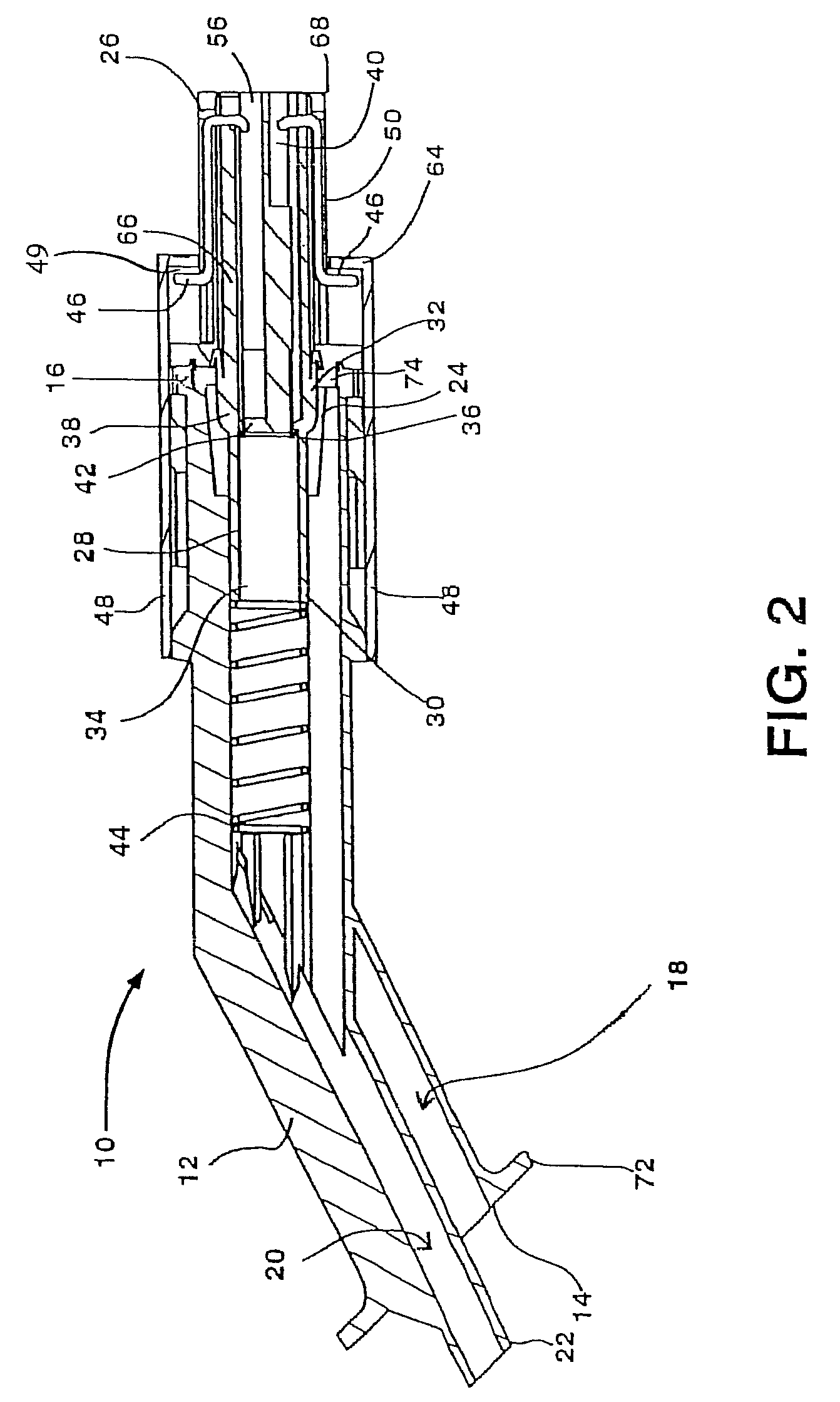Closeable self-venting spout
a self-venting, spout technology, applied in the direction of pliable tubular containers, liquid handling, packaging goods types, etc., can solve the problems of waste of materials, toxic or otherwise dangerous or damaging to persons or things in the surrounding area, and the size of the opening in the filling container may not be compatible with the size of the opening, etc., to achieve the effect of reducing leakage and spillage, reducing the length and shape, and releasing excessive container pressur
- Summary
- Abstract
- Description
- Claims
- Application Information
AI Technical Summary
Benefits of technology
Problems solved by technology
Method used
Image
Examples
Embodiment Construction
[0044]While embodiments of the invention may be modified and alternatively constructed, certain embodiments have been shown in the drawings and will be described below in detail. It should be understood, however, that there is no intention to limit the invention to the specific forms disclosed, as the invention is to cover all modifications, alternative constructions, and equivalents falling within the spirit and scope of the invention as defined in the claims.
[0045]The preferred self-venting pouring spout is especially-well adapted for a non-vented filling container. The spout housing may be made of one or more pieces / units, but in the embodiments shown, the housing comprises a single one-piece tube as a spout body, and a nozzle unit or “nozzle end”. The spout body comprises a first hollow passageway with an open spout first end and an open spout second end, wherein the spout body connects at its second end to the nozzle unit.
[0046]A generally hollow tubular inner conduit is formed...
PUM
| Property | Measurement | Unit |
|---|---|---|
| oblique angle | aaaaa | aaaaa |
| length | aaaaa | aaaaa |
| diameter | aaaaa | aaaaa |
Abstract
Description
Claims
Application Information
 Login to View More
Login to View More - R&D
- Intellectual Property
- Life Sciences
- Materials
- Tech Scout
- Unparalleled Data Quality
- Higher Quality Content
- 60% Fewer Hallucinations
Browse by: Latest US Patents, China's latest patents, Technical Efficacy Thesaurus, Application Domain, Technology Topic, Popular Technical Reports.
© 2025 PatSnap. All rights reserved.Legal|Privacy policy|Modern Slavery Act Transparency Statement|Sitemap|About US| Contact US: help@patsnap.com



